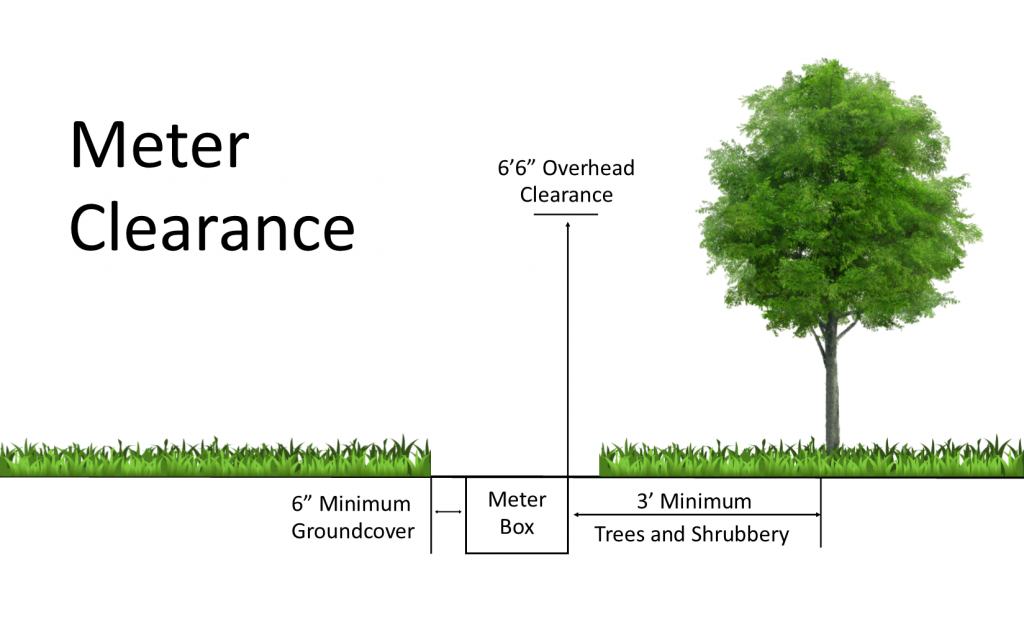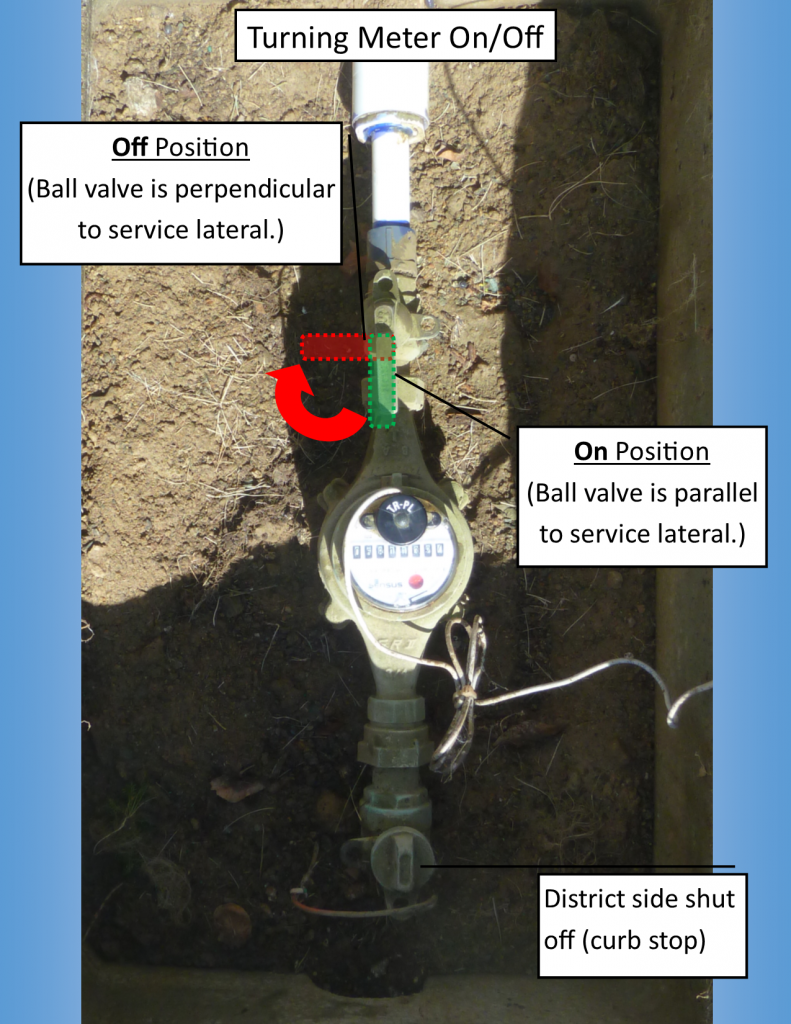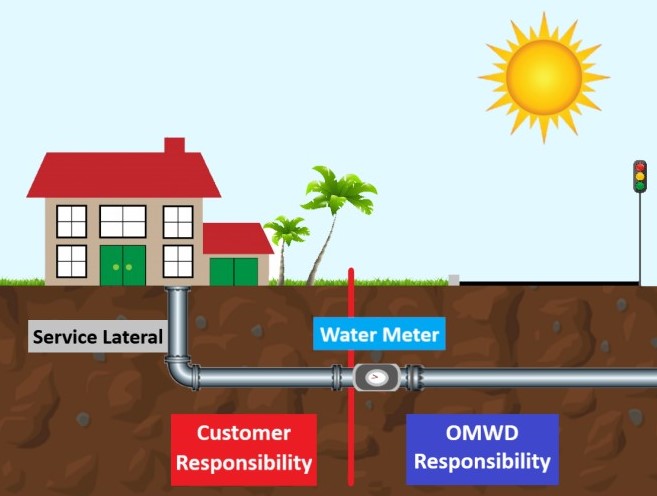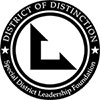Water Meter and Leaks
Finding Your Water Meter
Most water meters are located near the street in a concrete meter box with the lid at ground level.
You may find several meters grouped together. To verify the meter you are looking at is your own, compare the meter number found on your bill to the identification number on the meter dial.
For assistance in locating your meter, contact us at 760-753-6466.
Accessing the Meter Box
The meter box should be kept clear of debris, vegetation, roots, excess dirt, and vehicles to ensure easy access for meter reading and in the event of a water emergency.

Turning Your Water On or Off at the Meter
Your meter has a valve that you can use to shut off the water to your property. Turn the handle perpendicular to the pipe to turn the water off. To turn the water on, slowly move the handle back into the position parallel to the pipe. It is important that the water is turned on slowly to avoid water hammer (a pressure wave that results in a knocking noise, vibration, and potentially pipe damage). It’s a good idea to occasionally move it to the off and on positions to ensure it works when you need it to.
If you are unable to move the handle, please notify us by calling 760-753-6466 or emailing Customer Service.

Your water use is measured by a meter that meets accuracy standards set by American Water Works Association.
The first four digits displayed on the left face of the meter are used for billing. For example, a reading of 013896514 appears as 0138 on your bill. The difference between the current and previous readings is your consumption for that period. Each billing unit equals one hundred cubic foot (HCF), or 748 gallons.
For more information, please view this video demonstration of how meters are read.
Establishing Automatic Alerts to Monitor Your Water Usage
OMWD offers My Water Use, which allows you to monitor your water consumption in near real-time. Alerts can help you detect leaks early and manage your water use efficiently. Access My Water Use and set up your alerts today.
Using Your Meter to Investigate a Potential Leak
For instructions on leak detection, view this video demonstration of how to troubleshoot for a leak using your meter.
You can check for a water leak yourself by following the instructions below.
- Open the lid from the meter and write down the current meter reading. Do not turn valve off in meter box. Do not use any water in your home for two to three (3) hours. After the specified amount of time has lapsed, write down the meter reading again.
- If the reading has not changed, you do not have a leak.
- If the reading has changed and you used no water for 2-3 hours, you have a leak on your property. Locate your shut-off valve (typically in the garage or on the side of your home) and shut the water off.
- With the shut-off valve closed, repeat the same steps above to see if the leak is outside the home, perhaps in the irrigation system.
- If you determine a leak is present, the next step is to find the location of the leak. First, look for evidence of leakage between the meter and your home.
- If no leaks are found, a thorough inspection of your pipes, fixtures, connections, and valves in and under your home.
- For all facilities after the meter, private plumbers or leak detection specialists should be considered. OMWD cannot repair or troubleshoot beyond the meter.
Checking Your Water Pressure
Residential properties should maintain household water pressure between 40-80 psi. Excessive pressure can damage appliances, irrigation systems, and plumbing fixtures.
OMWD recommends that customers regularly maintain and replace pressure regulators to avoid damage caused by higher pressure.
Your Water Service Lateral
The service lateral is the underground pipe connecting OMWD’s water main to your property’s water meter. Customers are responsible for the maintenance of the private portion of their water service lateral that is on the customer’s side of the water meter.
OMWD Responsibility: Maintenance of the service lateral from the water main to the water meter.
Property Owner Responsibility: Maintenance of the service lateral from the meter to the home.

First, check the valve where the water line enters your property to make sure it hasn’t been turned off. Sometimes, a landscaper discovers a leak and turns off the water without notifying the property owner.
Have you recently installed an automated smart water flow monitoring device? These devices detect unusual and consistent water usage and have automatic and remote water shut-off capabilities. Please check your settings to determine if your water has been turned off remotely by your smart device, as a result of detecting unusual water usage. Verify if the usage pattern was abnormal, and if it was an error, you can turn your water back on remotely with your device phone app; otherwise, you may need to contact a private plumbing or leak detection service to help you troubleshoot your water leak.
Have you recently had your water softener replaced? Sometimes the representative forgets to turn the valve back on. Does it have a restart button that may need to be pushed? Some softeners have bypass valves, try to bypass the unit.
Look for obvious leaks between the valve and water meter. If this doesn’t work and you still have no water, call our office at 760-753-6466, and we will be happy to assist you in finding the problem to restore your water service.
Fire Meters
Some properties have a dedicated water meter for fire service, located in the general vicinity of the domestic water meter for the building. While some infrequent water use can be expected due to fires, system testing, or leakage, water usage is being recorded by OMWD. If a leak is discovered in the fire line, it must be promptly repaired. Please call OMWD to address this issue. You may need to schedule a plumber or leak detection specialist.


